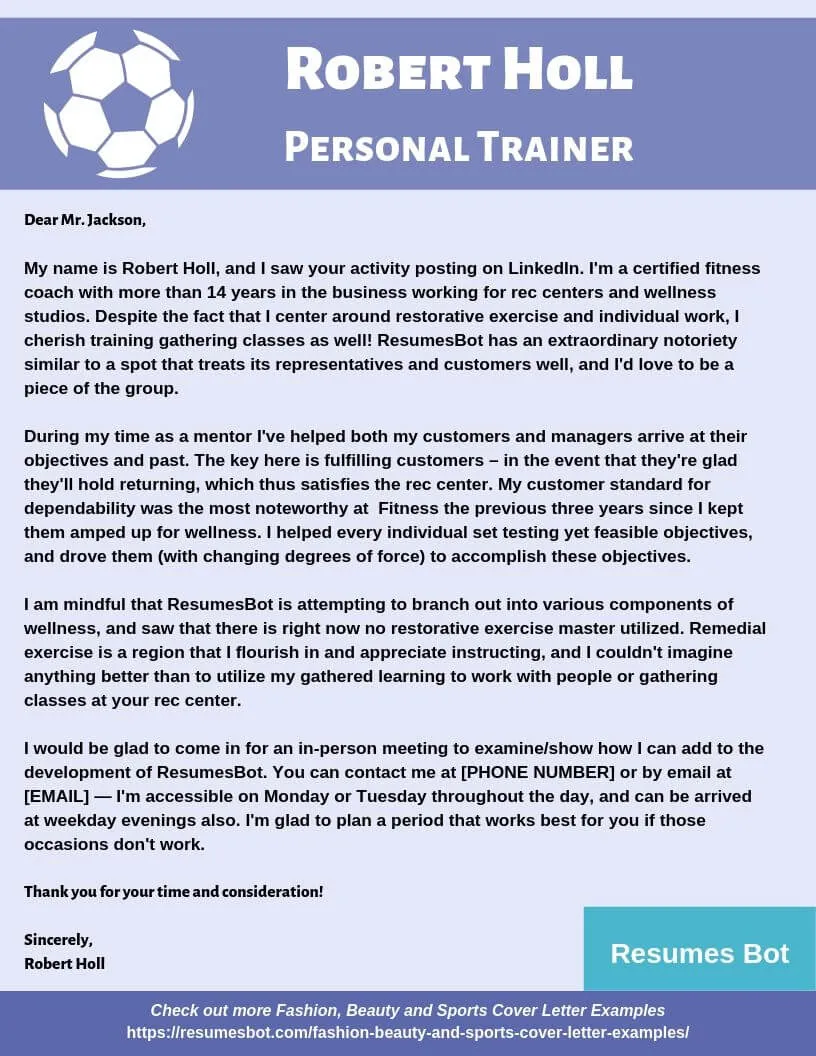Crafting Your Personal Training Cover Letter
A compelling personal training cover letter is your first chance to make a lasting impression on potential employers. It’s more than just a formality; it’s a crucial tool to showcase your personality, experience, and passion for fitness. A well-written cover letter can significantly increase your chances of landing an interview and ultimately securing your dream job as a personal trainer. This guide provides essential tips and strategies to help you craft a standout cover letter that grabs the attention of hiring managers. It emphasizes how to highlight your qualifications, demonstrate your unique value proposition, and make a memorable first impression. Remember, the goal is to present yourself as the best candidate and convince the employer that you’re the right fit for their team. By following these guidelines, you’ll be well on your way to creating a cover letter that opens doors to exciting career opportunities in the fitness industry.
Understanding the Importance of a Cover Letter
The importance of a cover letter in the job application process cannot be overstated, especially in a competitive field like personal training. While your resume provides a summary of your skills and experience, the cover letter gives you an opportunity to elaborate on these points and provide a glimpse into your personality and work ethic. It allows you to tell your story and explain why you are the perfect fit for the specific role and the gym or studio. It’s also your chance to showcase your communication skills, attention to detail, and genuine interest in the position. A well-crafted cover letter demonstrates professionalism and a proactive approach, which can set you apart from other applicants who might only submit a resume. Consider the cover letter as your chance to make a personal connection with the hiring manager and build a strong foundation for a successful interview. This initial connection can be vital in establishing rapport and demonstrating your enthusiasm for the role.
Highlighting Relevant Skills and Certifications
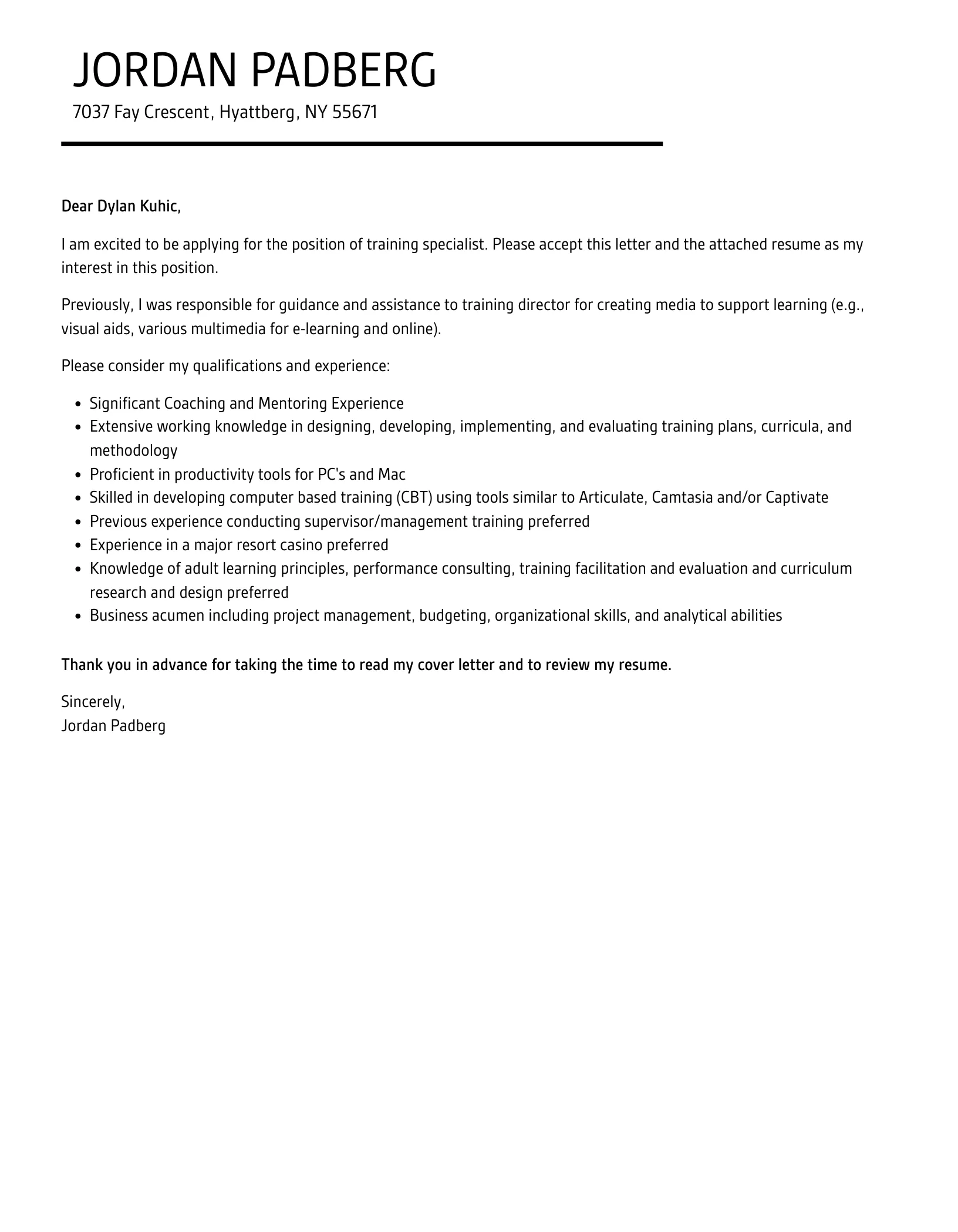
Your personal training cover letter is the ideal space to highlight your relevant skills and certifications. Begin by listing your nationally recognized personal training certifications, such as those from NASM, ACE, or ACSM. Clearly state the type of certification and the issuing organization. Beyond certifications, identify and emphasize skills that are directly related to personal training. This includes experience in fitness assessment, program design, exercise technique, and client motivation. If you have experience with specific populations, such as seniors, athletes, or individuals with medical conditions, be sure to mention this. Also highlight any additional skills that can add value, such as CPR and first aid certification, knowledge of nutrition, experience with specific training equipment, or familiarity with client management software. Tailor your skills and certifications to match the job description, and provide concise examples of how you’ve applied these skills to achieve positive outcomes for clients. This targeted approach will demonstrate that you have the necessary qualifications and the ability to excel in the role.
Structuring Your Personal Training Cover Letter
A well-structured cover letter is essential for making a professional impression. It should be easy to read and navigate, with each section serving a clear purpose. This ensures that the hiring manager can quickly understand your qualifications and the value you bring to the table. The structure is designed to capture attention, convey your key qualifications, and prompt the reader to take action by inviting you for an interview. A clear structure also reflects your organizational skills and attention to detail, qualities that are highly valued in personal trainers. A standard cover letter consists of key elements, each playing a crucial role in showcasing your potential and securing an interview. Taking the time to format it correctly is a sign of your professionalism and commitment, making it more likely for you to be noticed and taken seriously.
Contact Information and Salutation
Start your cover letter by including your contact information at the top of the page, including your full name, phone number, email address, and, optionally, your LinkedIn profile link. This allows the hiring manager to easily reach out to you. After your contact information, provide the date and the hiring manager’s name and title, if known, as well as the gym or studio’s name and address. If you don’t know the hiring manager’s name, use a professional salutation such as ‘Dear Hiring Manager’ or ‘Dear [Gym Name] Team’. Avoid generic greetings, such as ‘To Whom It May Concern’, as they suggest a lack of research and personalization. This professional beginning sets the tone for the rest of the letter and demonstrates your attention to detail.
Opening Paragraph
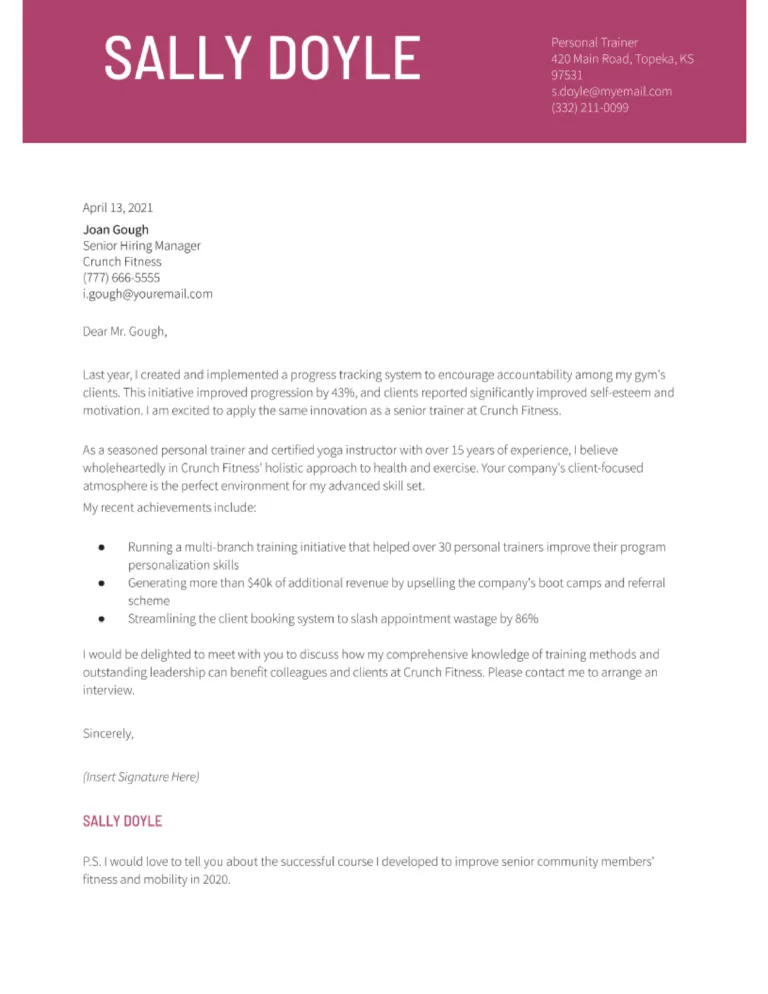
The opening paragraph of your cover letter is critical because it determines whether the reader will continue reading. Start by stating the position you are applying for and how you learned about it. Then, immediately grab the reader’s attention by highlighting your most impressive qualification or a unique selling point that aligns with the job requirements. This could be your specific certifications, years of experience, or a particular area of expertise. Keep the opening concise and engaging. This initial statement should signal your enthusiasm and directly connect you to the role. Avoid generic introductions that don’t highlight what makes you stand out. Your goal is to create an immediate positive impression and encourage the hiring manager to explore your qualifications further.
Body Paragraphs
The body paragraphs are where you showcase your skills, experience, and accomplishments in detail. Each paragraph should focus on a specific aspect of your qualifications, providing concrete examples that illustrate your abilities. Use the STAR method (Situation, Task, Action, Result) to describe how you have successfully handled challenges and achieved positive outcomes for your clients. For instance, describe a time when you helped a client achieve a specific fitness goal, detailing the situation, the task at hand, the actions you took, and the results achieved. Quantify your achievements whenever possible; provide metrics to demonstrate your impact, such as the percentage increase in client strength or weight loss. Align your skills and experience with the job description and tailor your examples to demonstrate that you are the best fit for the specific role. Ensure the body paragraphs flow logically, connecting your experiences and showcasing the value you bring to the gym or studio.
Closing Paragraph and Call to Action
The closing paragraph should summarize your interest in the position and reiterate your enthusiasm. Thank the hiring manager for their time and consideration. Include a clear call to action, such as requesting an interview. Make it easy for the employer to take the next step by expressing your availability for a meeting and providing your contact information again. End with a professional closing, such as ‘Sincerely’ or ‘Best regards’, followed by your typed name. Proofread the entire cover letter to ensure there are no grammatical errors or typos. A strong closing paragraph will leave a lasting positive impression and encourage the hiring manager to take the next step towards hiring you. A well-crafted closing paragraph can be the crucial element that secures your interview.
Showcasing Your Passion and Experience
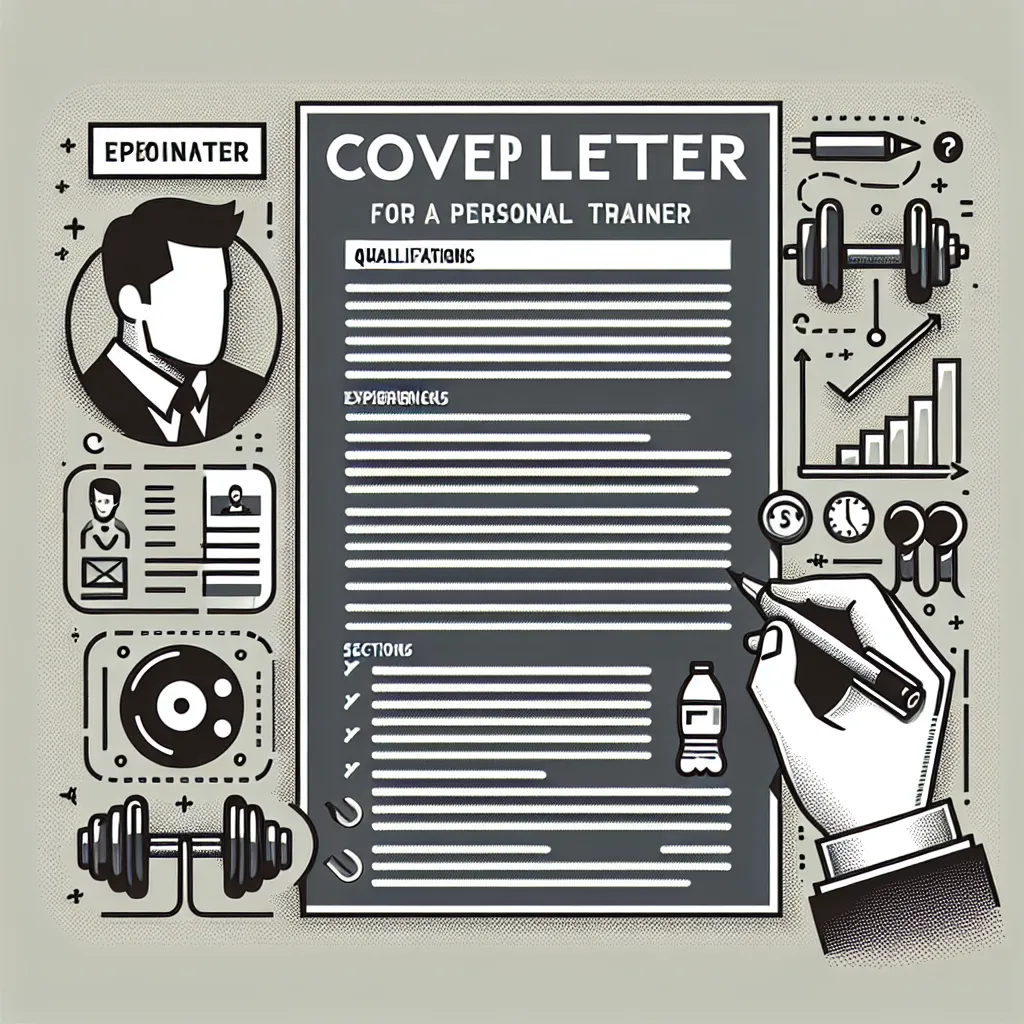
Your passion for fitness and your experience are key elements of a successful personal training cover letter. These aspects can distinguish you from other candidates. It’s not just about what you’ve done, but also how you convey your enthusiasm for the profession. You should highlight how you stay updated with fitness trends, and your genuine desire to help people achieve their health and fitness goals. Make sure your letter reflects your genuine interest in the role and the company. Highlight any specialized training or knowledge you possess, showcasing that you’re not just qualified, but also enthusiastic about your work. This genuine approach will make your application stand out and showcase your commitment to both the profession and your future clients. Demonstrating your passion will ensure you leave a memorable impression.
Quantifying Achievements
Quantifying your achievements is a powerful way to demonstrate your value to potential employers. Instead of simply stating that you have ‘helped clients achieve their goals’, provide specific metrics to illustrate your impact. For example, state the percentage increase in client strength, the amount of weight loss achieved, or the number of clients you have successfully trained. If you have increased client retention rates, provide that number or percentage. Use data to back up your claims and show the concrete results of your efforts. When possible, highlight achievements such as certifications, any awards, or any positive feedback received from clients. This will provide compelling evidence of your accomplishments, helping the hiring manager assess the true impact of your work and position you as a high-value candidate. Quantitative results provide tangible evidence of your success.
Providing Specific Examples
Specific examples provide the context and proof that your skills and experience are valuable. Use the STAR method (Situation, Task, Action, Result) to explain how you have handled challenges and achieved goals for clients. This approach helps to paint a clear picture of your abilities. Describe a time you helped a client overcome a significant obstacle or achieve a specific fitness goal. Detail the situation you faced, the task at hand, your specific actions, and the positive result. This allows the hiring manager to understand your thought process and the strategies you employ to achieve success. Mention any specific programs you’ve designed, or the specialized equipment you’re familiar with. This demonstrates a proactive and results-oriented approach that sets you apart from other applicants. Show, don’t just tell, the employer by illustrating your impact.
Tailoring Your Letter to the Job
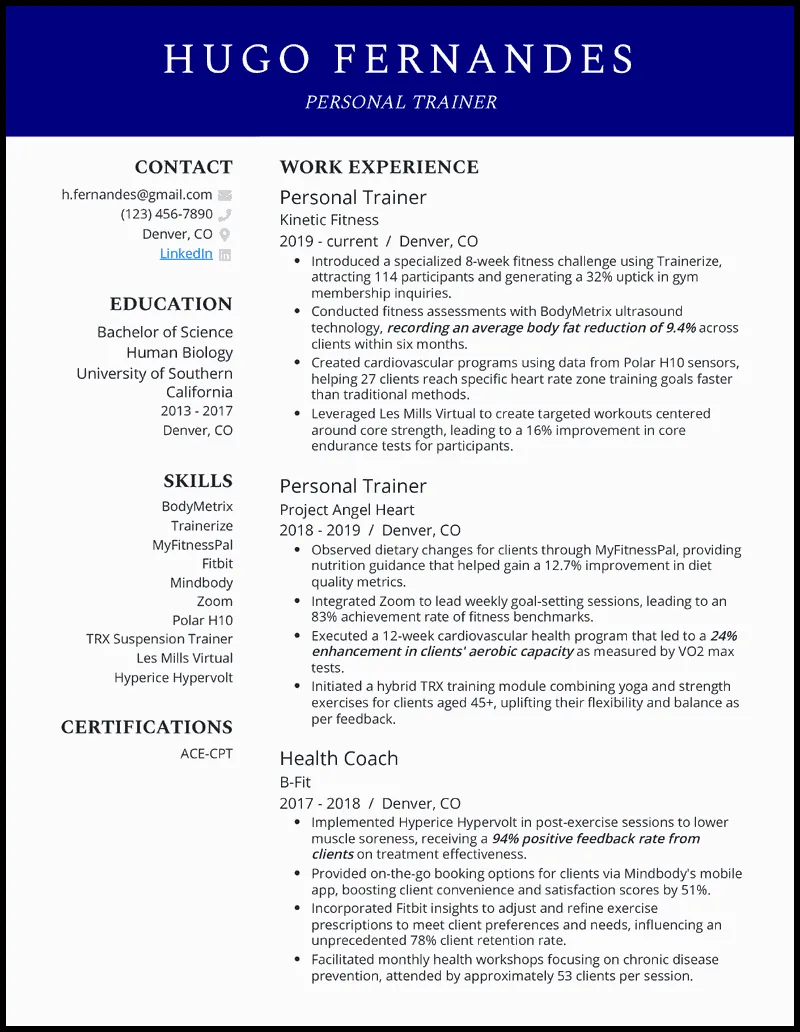
Tailoring your cover letter to each specific job is critical for increasing your chances of success. The hiring manager can quickly tell if you’ve used a generic template. Invest time to customize your cover letter for each position you apply for. This demonstrates your genuine interest in the role and in the specific company. Tailor your cover letter to showcase you understand the gym’s mission and values. Address the specific requirements of the job description by highlighting the skills and experience that align with those needs. Be specific about why you’re interested in the particular gym or studio and how you can contribute to their team. You should also tailor the tone and language of the letter to match the company’s brand and culture. This customized approach will make you stand out and convey that you’ve put in the effort to learn more about the position and the company.
Researching the Gym or Studio
Before you begin writing, thoroughly research the gym or studio you are applying to. Visit their website, check their social media profiles, and read any client reviews. Learn about their training philosophies, the types of clients they serve, and the specific services they offer. Understanding their mission and values will allow you to tailor your cover letter and demonstrate how your skills and experience align with their needs. Mention any specific programs or equipment they use, and explain why you are excited about the opportunity to work in their environment. This level of detail shows that you are genuinely interested in the position. This research provides valuable insights that you can use to customize your letter and make a stronger impression on the hiring manager.
Addressing the Specific Requirements
Carefully review the job description and identify the key requirements and qualifications the employer is seeking. In your cover letter, address each of these requirements by explicitly stating how your skills and experience match their needs. Use the same keywords and phrases from the job description to demonstrate that you have the necessary qualifications. If the job description requires a specific certification, training style, or client management experience, be sure to highlight these aspects. Provide specific examples of how you have successfully demonstrated these skills in the past. Tailor the content to ensure the employer understands that you meet all the requirements and are a good fit for the role. Direct addressing of the requirements shows you took the time to understand the needs of the role.
Proofreading and Formatting
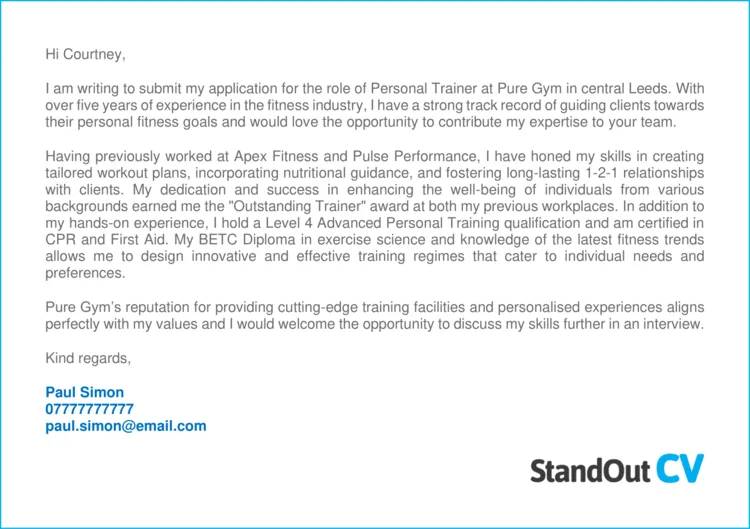
Proofreading and formatting are crucial steps to ensure your cover letter looks professional. Make sure there are no grammatical errors or typos. A poorly formatted or error-filled cover letter can undermine your credibility, regardless of the content. Use a clean, easy-to-read font, such as Arial or Times New Roman, and maintain consistent formatting throughout your letter. Ensure your contact information and salutation are correctly placed. Use appropriate spacing and paragraph breaks to make the letter easy to read. Before submitting your cover letter, proofread it carefully for spelling, grammar, and punctuation errors. Ask a friend or family member to review it as well, as a fresh set of eyes can often catch errors that you might have missed. Proofreading and formatting demonstrate your attention to detail and professionalism.
Common Mistakes to Avoid
There are several common mistakes that can hurt your chances of landing an interview. Avoid using generic templates; always personalize your cover letter to each job application. Don’t simply restate your resume; the cover letter should expand on your skills and experiences. Avoid including irrelevant information or rambling on about unrelated topics. Do not write a cover letter filled with errors; always proofread carefully. Ensure you do not use the same cover letter for all jobs, as this shows a lack of customization. Lastly, avoid a negative tone. Instead, focus on your accomplishments and enthusiasm.
Formatting and Style
Formatting and style are important elements for your cover letter. Choose a professional, easy-to-read font like Arial or Times New Roman. Use a standard 1-inch margin on all sides. Use single spacing for the body of your letter and double space between paragraphs. Keep your letter to one page. Use a clear and concise writing style. Avoid jargon and overly complicated language. Use active voice and action verbs to make your writing more engaging. Make sure your cover letter is formatted so it looks professional and easy to read. A well-formatted cover letter helps you make a good impression and highlight your qualifications.
